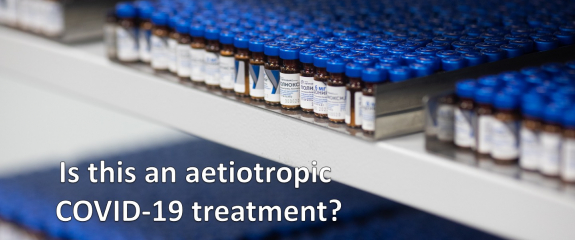Could a simple small molecule from the 70's pave a path out of COVID-19?

To date, there have been countless millions of confirmed cases of COVID-19 worldwide, which have resulted in hundreds of thousands of deaths. The world has been desperate for effective drugs to treat COVID-19. The pandemic has spurred an intense, collaborative, and global effort to repurpose existing approved drugs for its treatment. Vaccines are now available but it is going to take a global effort to complete vaccination of the world’s population. Even with the vaccines, predications suggest that we face a future of annual vaccinations. Could a simple polymeric small molecule developed during the 1970's and ‘80s pave a novel path out of the COVID-19 pandemic?
We have seen a massive response by the pharmaceutical industry in its repurposing efforts, that is, the investigation of approved existing drugs for the treatment of new diseases. There has been an explosion of clinical trial activity such that the industry is bordering on exhaustion as all available resources have been called to action. As might be predicted, multiple existing antiviral medications that have been used for SARS, MERS, HIV/AIDS and malaria are being tested in clinical trials. Because of the immense pressure COVID-19 is placing on world health systems, WHO has established an international ‘Solidarity’ clinical trial to help find an effective treatment for this disease. There have been front runners to emerge from this process, namely the antiviral remdesivir; the malaria medications hydroxychloroquine and chloroquine; Kaletra, a combination of HIV drugs; and a host of other combinations, including interferon beta-1a. However, the results have been little more than disappointing. The industry and medical experts alike are left scratching their collective heads.
Enter azoximer bromide (AZB; Polyoxidonium®), an adjuvant for use with hemagglutinin glycoprotein-based influenza vaccine (Grippol®). Before Perestroika the State Scientific Center of the Institute of Immunology of the Ministry of Health of the Russian Federation (now the FSBI State Scientific Center "Institute of immunology" FMBA of Russia) was focused on identifying adjuvants for flu vaccines, enhancing the potentiation of immune responses to infection. As the Iron Curtain fell the Russian team commercialised their findings in the form of azoximer bromide (AZB; Polyoxidonium®). Move forward to the present day and variants of the adjuvant-glycoprotein combination have been widely used in Russia and CIS countries since the early 2000s. Estimates suggest that the adjuvant azoximer bromide has been used in over 400 million vaccine doses. Little known and overlooked in the West, azoximer bromide was identified as an immune modulator drug from the outset. As such, a considerable body of work (mostly published in Russian) has confirmed its potential to increase a host’s resistance to local and general infection; it is indicated and frequently used in the treatment of viral infections.
As the pandemic hit physicians in countries previously recognised as making up the Eastern Block, Russia Slovakia, Georgia, Belarus, Ukraine, Kazakhstan and Uzbekistan naturally turned to Polyoxidonium®, not only to add to the recognised standard of care in hospitalised patients but also for use in themselves prophylactically so that they could continue to ‘keep the lights on’ as clinical teams on the front line themselves became victims. At this point, Petrovax, the manufacturer of Polyoxidonium®, determined to initiate a clinical programme with azoximer bromide to investigate whether it had any potential against COVID-19. The findings of the first of those studies reported this week in the journal ‘Drugs in Context’ [1].
The open-labelled trial assessed the efficacy and safety of inhaled Polyoxidonium® as a therapy for patients hospitalised with COVID-19 identified as being severe on entry. In addition to standard of care treatment, patients received 12 mg of intravenous AZB once daily for 3 days, followed by AZB 12 mg intramuscularly every other day for 13 days until discharge. The primary outcome was change in clinical condition using the Ordinal Scale for Clinical Improvement (OSCI), specified as the primary endpoint in the WHO Master Protocol. Azoximer bromide was well tolerated and all patients were alive and discharged with normal oxygen saturations with no secondary infections or delayed mortality reported. Positive top line results include reductions in mean OSCI and National Early Warning Score values following treatment with azoximer bromide. A decrease in OS score was marked in patients identified as severe on recruitment [1].
Clearly, further appropriately controlled studies are necessary to determine whether these observations reflect a clear clinical benefit. It is expected that data from a larger international, multi-centre, randomised placebo-controlled study with azoximer bromide in 400 hospitalised patients that is currently being analysed [2] will confirm whether a simple polymeric small molecule developed during the 1970s and ‘80s pave a novel path out of the COVID-19 pandemic.
References
[2] Efficacy and Safety of Polyoxidonium® in Hospitalized Patients With Coronavirus Disease COVID-19. https://www.clinicaltrials.gov/ct2/show/NCT04381377?term=azoximer&draw=2... [accessed 30 March 2021].


